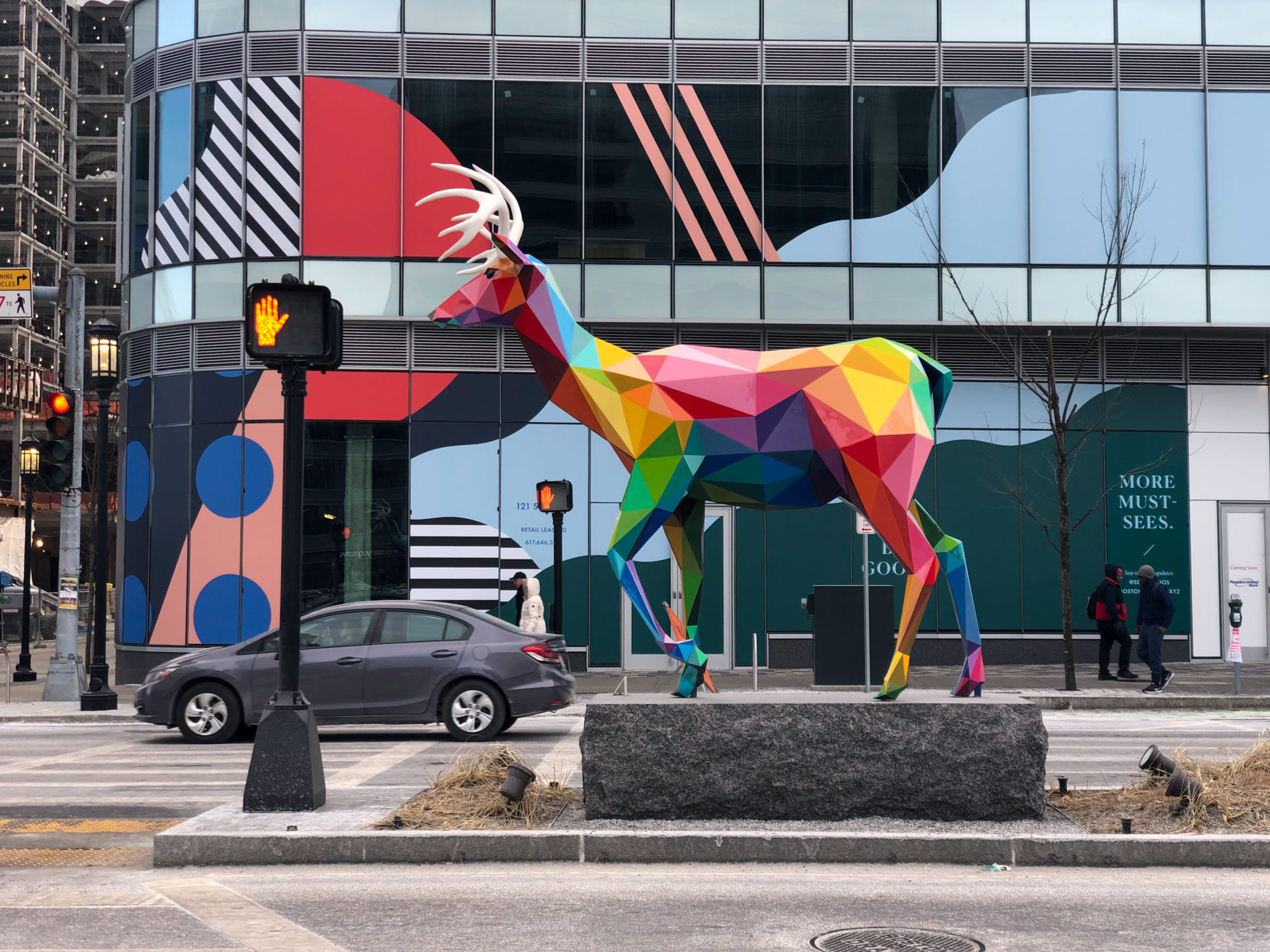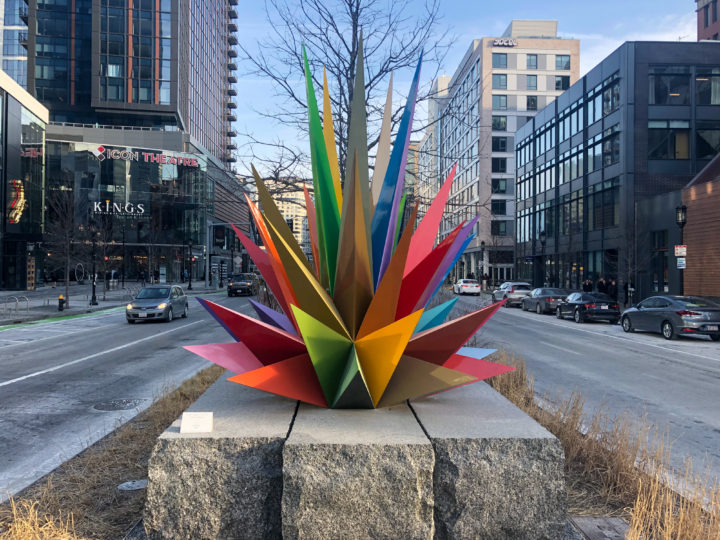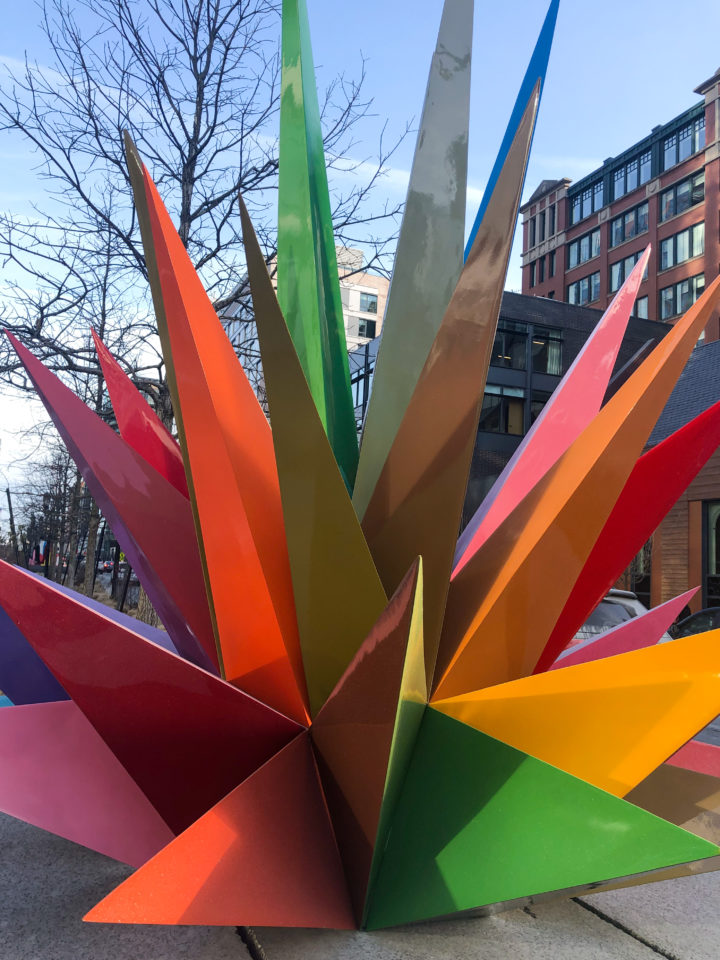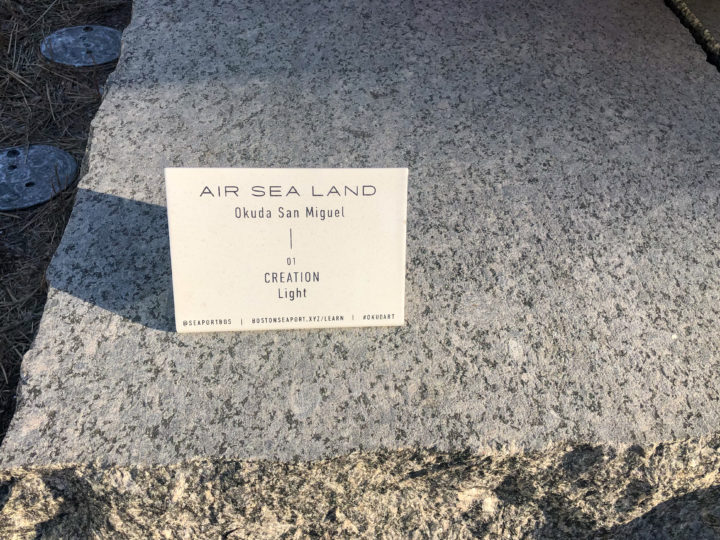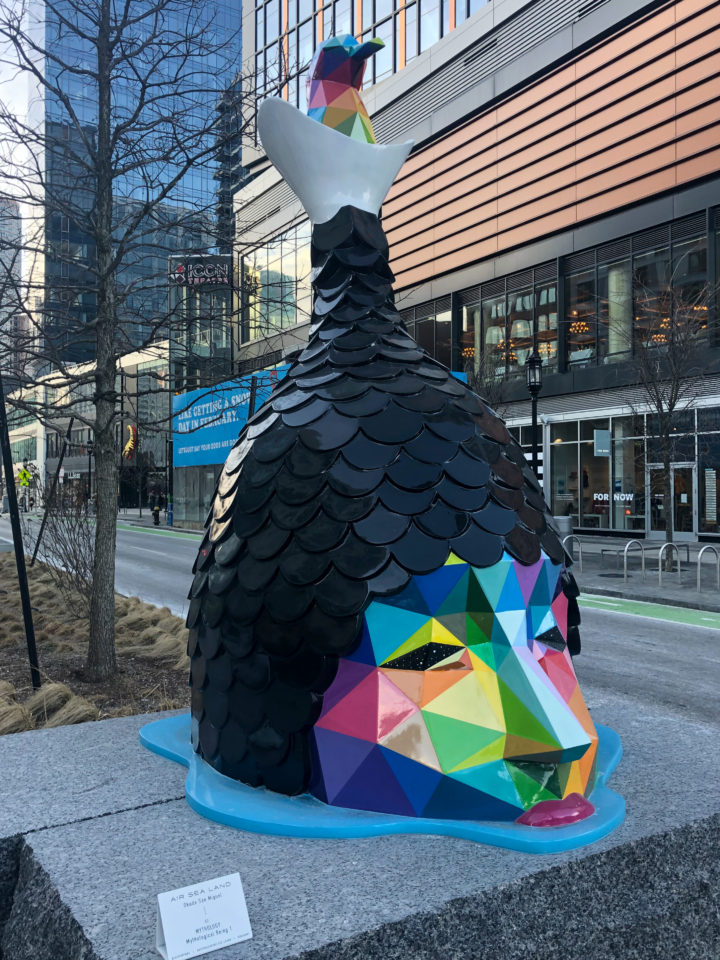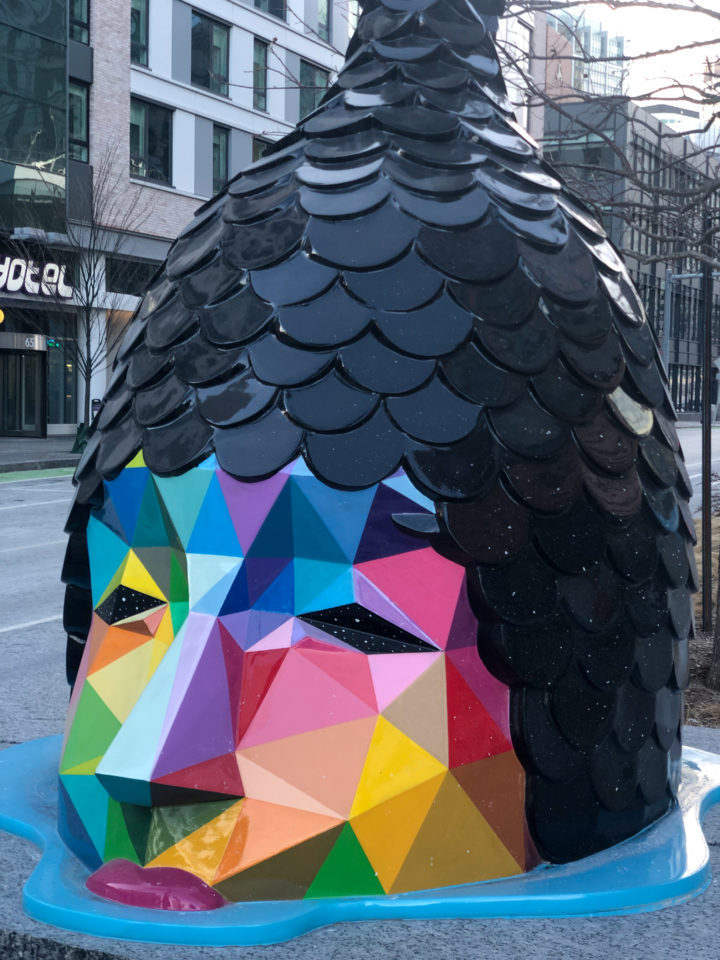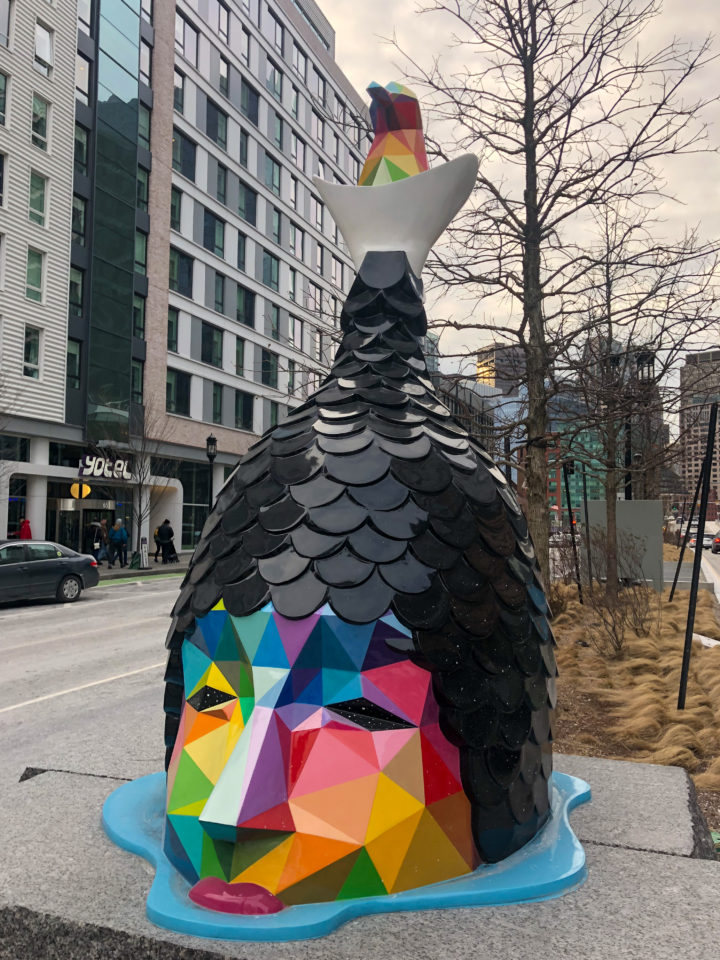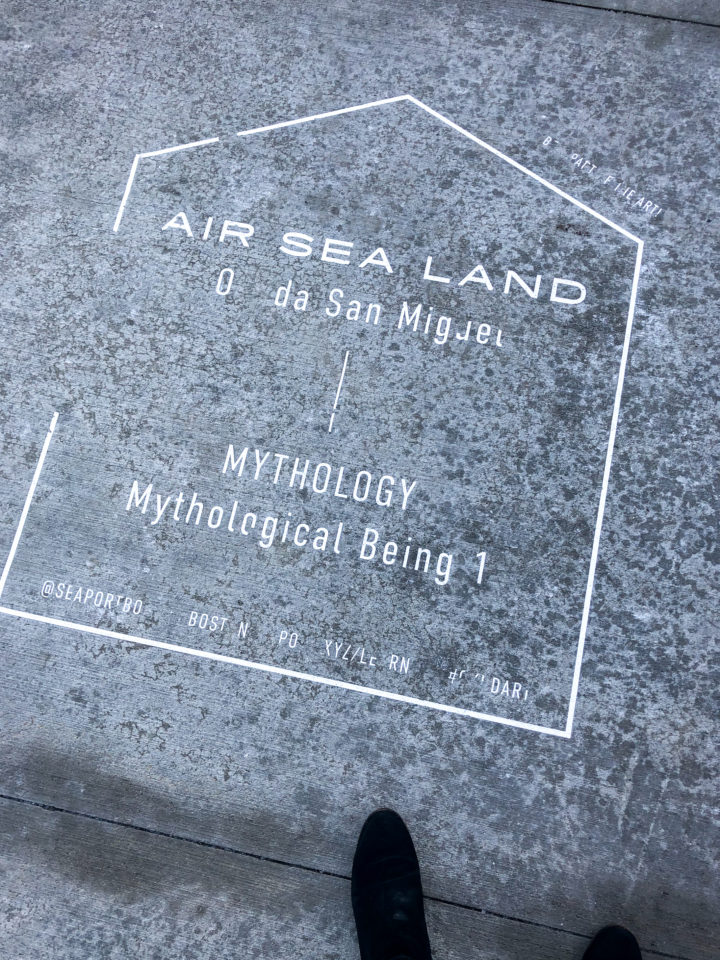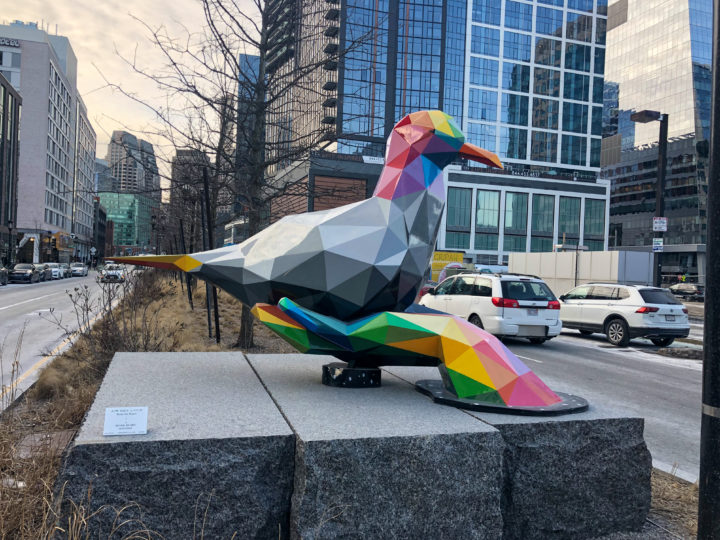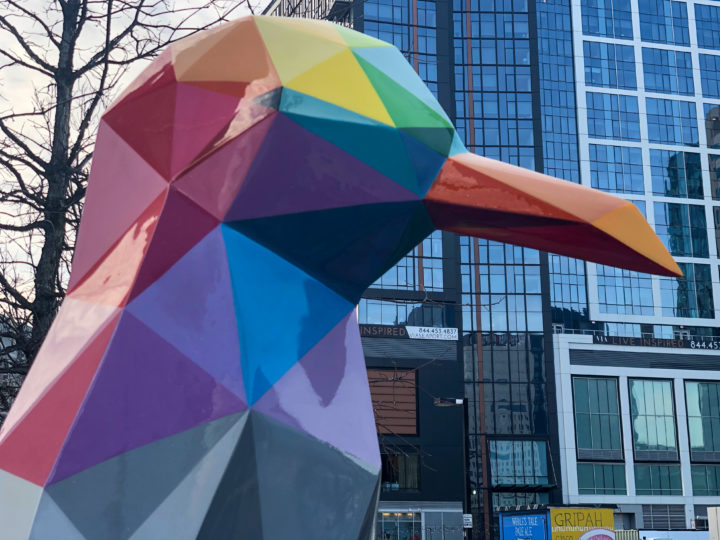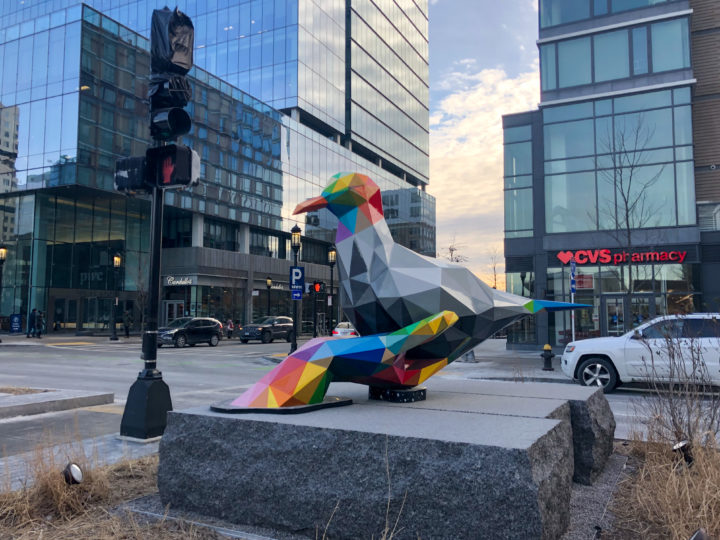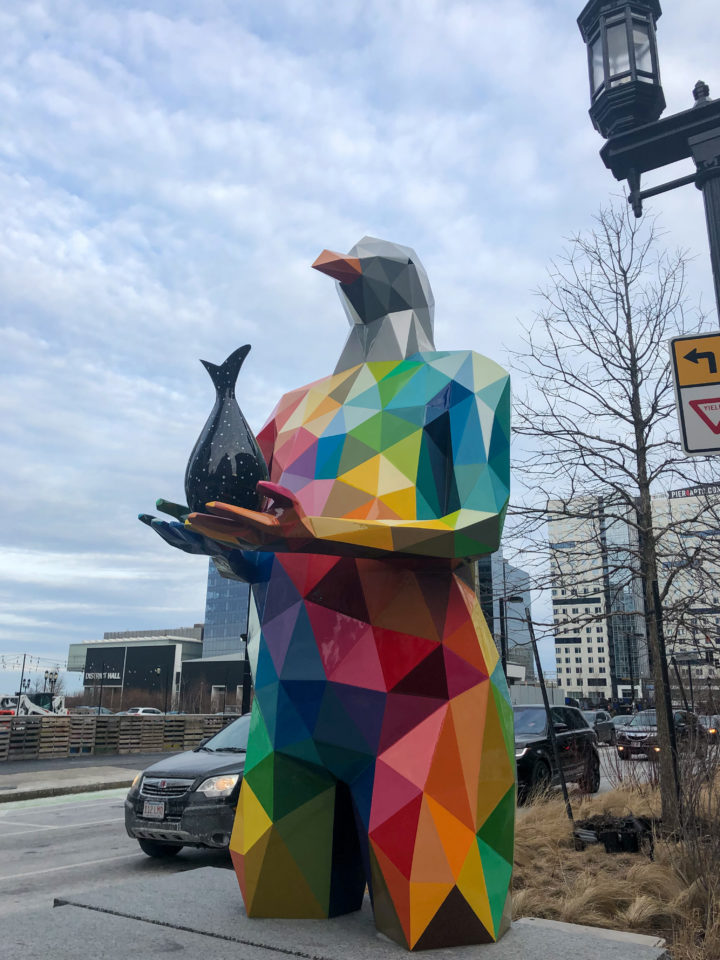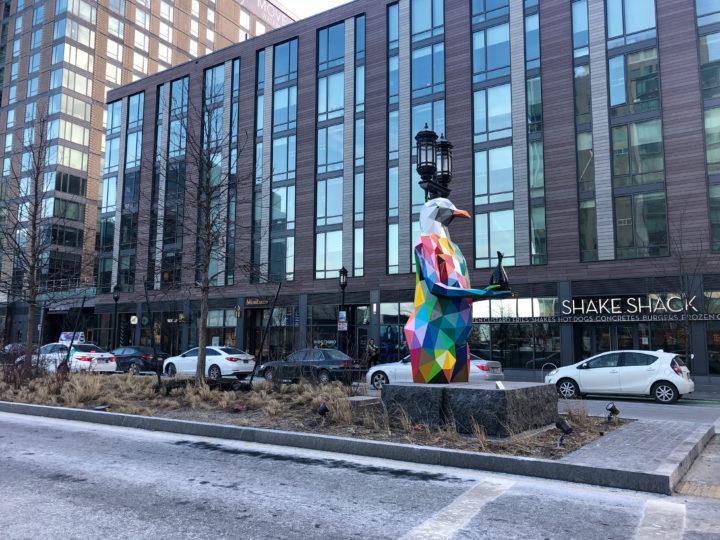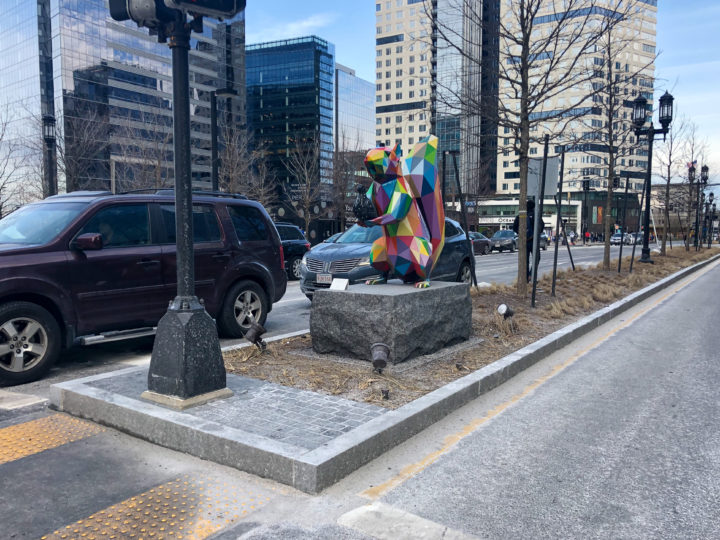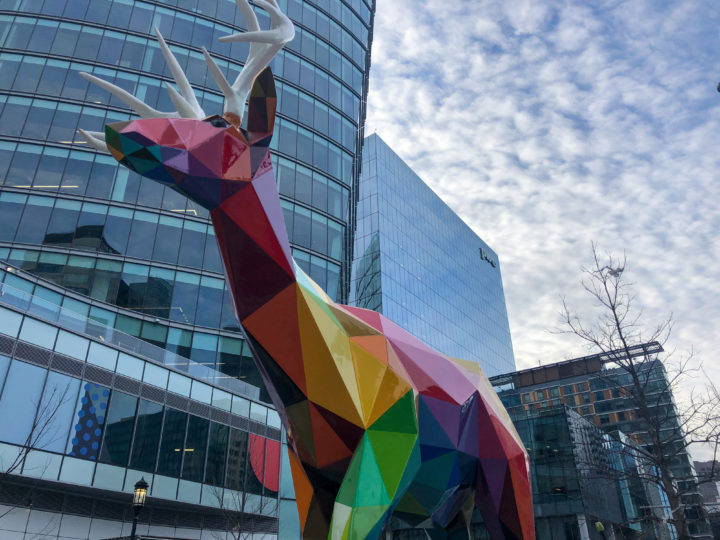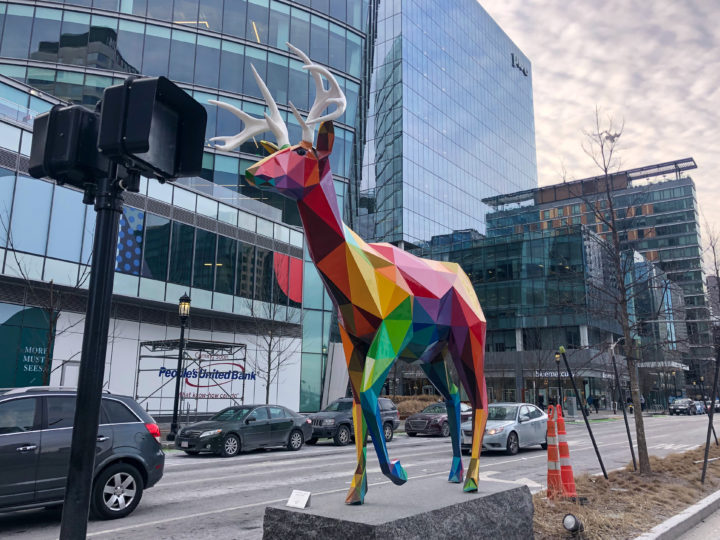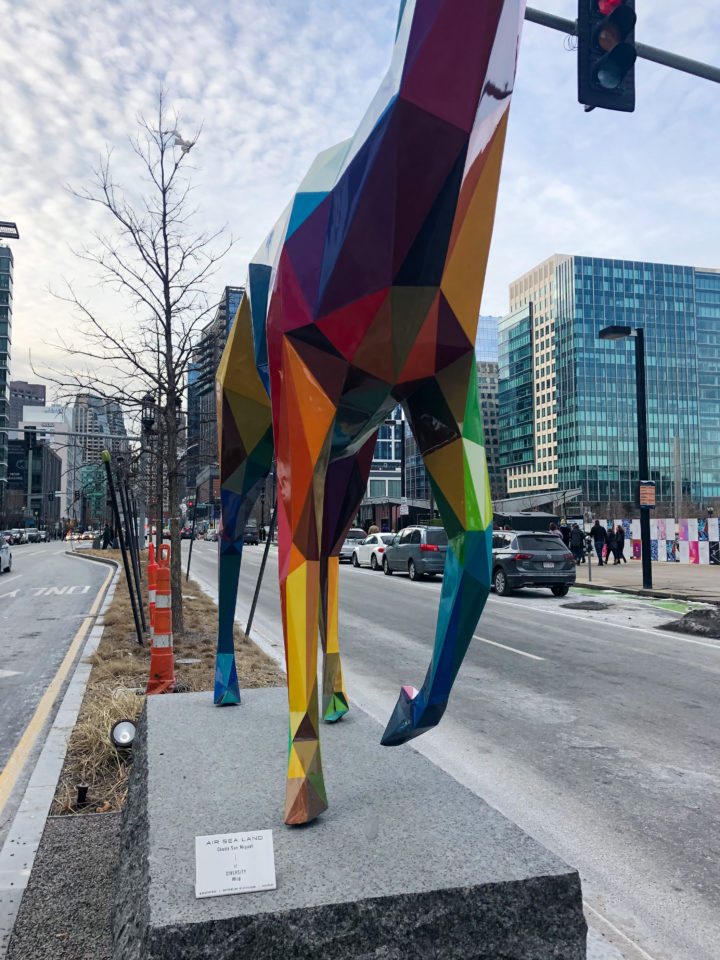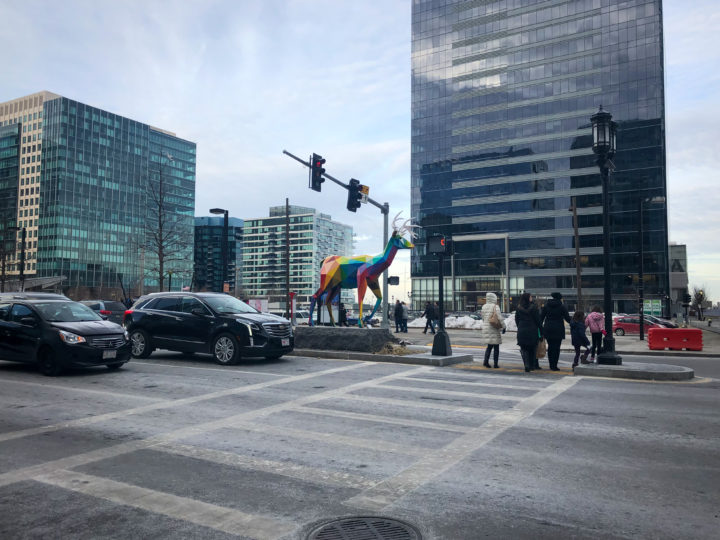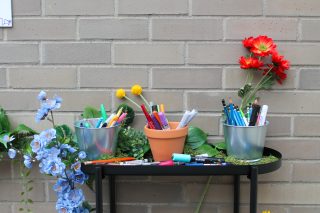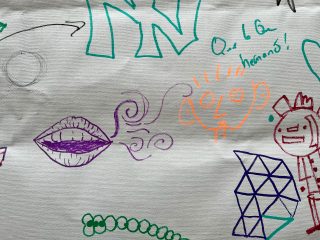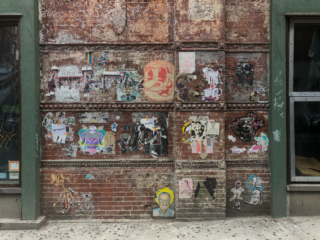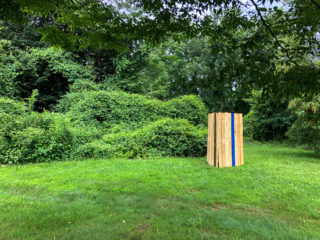The project was a perfect confluence of favorites: not just a series of multiple permanent public works by Okuda, but curated by Justkids, and installed near one of my favorite museums, the ICA, in Boston’s quickly developing (and increasingly expensive) waterfront neighborhood, the Seaport.
The work itself was phenomenal. Air Sea Land was made up of seven sculptures installed in succession, beginning with the highly abstracted asterisk burst of Creation: Light, and ending with the majestic deer represented in Diversity: Wild.
What didn’t sit right with me though, is that all seven sculptures were installed within the medians at intersections, surrounded by traffic on both sides. Attempting to see the back of the artworks was difficult, requiring trekking back into the landscaped area of the median where pedestrians were clearly not intended to go. Sitting with an artwork, spending time with its details and taking photographs, was made stressful both by the cars idling or passing on either side, and the lingering dread of just missing the opportunity to cross and being stranded with the artwork in the middle of the intersection.
This passive, frontal focus given to the works through their installation site contributed to their interpretation as merely decorations in the landscape—bright spots of light that function as ornamentation, intended to disguise or distract from the sleek but stale development of the Seaport in the name of capitalism. Shake Shacks and Starbucks litter Seaport Boulevard, the street on which all of these sculptures find themselves.
But if you’re willing to look closer, there’s another reading to be found within this critique of installation site, and it’s one of critique itself. These natural elements: light, water, birds, deer, fish, and their mythological interpretations, are, like the viewer, caught within the rapid ongoing pace of urban development. The deer of Diversity: Wild, and the squirrel of Diversity: Domestic, both have real, lived versions (although the squirrel is certainly not to scale!) that can be found within the natural live within and surrounding the Boston area.
And like those real squirrels and deer, these spectral sculptures are trapped between lanes of traffic, unable to escape human domination of the landscape, and are exploited in the name of commercialism — as surely the fact that deer and squirrels are still plentiful in the northeast help facilitate the false narrative that nature and its domination through capitalism are able to live coexist peaceably, without one being dramatically impacted by the other.
While it was a freezing February on the day that I took these photos, no one else I saw walking along the Seaport paused, much less stopped, in the middle of the intersection to take another look. It’s my hope that sculptural placements like these might encourage more subversion of prescribed interactions with the built landscape—why should we have to make it across in just one light?—but there wasn’t much about the placement of the sculptures that inspired more than the point-look-cross-pass motions we’re used to in safely crossing from one side of a street to the other.
It’s my understanding that Air Sea Land is a permanent installation (I reached out to the Boston Seaport months ago asking but never heard back), but I sincerely hope that it is, because you’d have to see these works more than once and under varying traffic conditions to experience them fully.
Regardless of the limitations in seeing these works in a full and close 360-degree inspection—which again, mirrors our inability to fully inspect and come to know the natural world—these seven sculptures call out from within the glass and concrete as a beautifully glorified tribute to the trees, animals, and landscape that are missing.
“…like those real squirrels and deer, these spectral sculptures are trapped between lanes of traffic, unable to escape human domination of the landscape…”
Artwork links: 01 Creation: Light, 02 Creation: Water, 03 Mythology: Being 1, 04 Mythology: Being 2, 05 Natural Balance: Coexistence, 06 Diversity: Domestic, & 07 Diversity: Wild.

